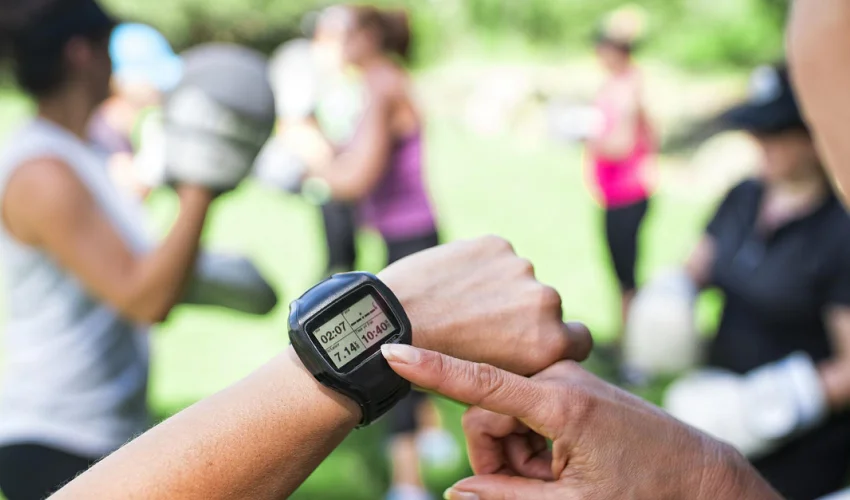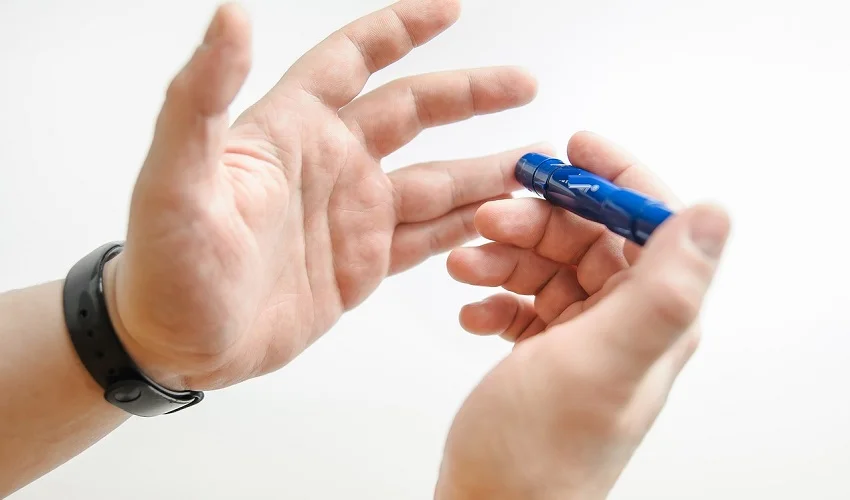Living with diabetes requires careful management of blood sugar levels throughout the day, including during work or school hours. Balancing blood sugar levels can be challenging in these environments, where routines, stressors, and food options may vary. However, with the right strategies and planning, individuals with diabetes can effectively manage their blood sugar levels and maintain optimal health. This article aims to provide valuable insights and practical tips for diabetic patients and their caregivers to navigate work or school hours successfully.
Understanding Blood Sugar Management
What is Blood Sugar?
Blood sugar, or glucose, is the main source of energy for the body. It comes from the food we eat, particularly carbohydrates. After digestion, glucose is absorbed into the bloodstream, and insulin, a hormone produced by the pancreas, helps regulate its levels.
The Role of Insulin
Insulin plays a crucial role in blood sugar management. It allows glucose to enter the body’s cells, where it can be used for energy. In individuals with diabetes, there is either a lack of insulin (Type 1 diabetes) or ineffective use of insulin (Type 2 diabetes), leading to imbalances in blood sugar levels.
The Impact of Diabetes on Blood Sugar Control
Diabetes affects blood sugar control by interfering with the body’s ability to regulate glucose effectively. High blood sugar levels (hyperglycemia) can lead to long-term complications, such as cardiovascular disease, nerve damage, and kidney problems. Conversely, low blood sugar levels (hypoglycemia) can cause dizziness, confusion, and, if severe, loss of consciousness.
Importance of Blood Sugar Management During Work or School Hours
Maintaining Optimal Focus and Energy
Proper blood sugar management is essential for maintaining focus and energy levels during work or school hours. Fluctuations in blood sugar can lead to fatigue, difficulty concentrating, and reduced productivity. By keeping blood sugar levels stable, individuals with diabetes can enhance their cognitive function and overall performance.
Avoiding Hypoglycemia (Low Blood Sugar)
Hypoglycemia can be particularly dangerous, as it can impair cognitive function and may require immediate medical attention. By actively managing blood sugar levels, individuals can minimize the risk of experiencing hypoglycemia during work or school hours.
Preventing Hyperglycemia (High Blood Sugar)
Hyperglycemia can result in increased thirst, frequent urination, and blurred vision. Over time, it can lead to serious health complications. Managing blood sugar levels effectively helps prevent the detrimental effects of hyperglycemia and ensures long-term health.
Long-term Health Benefits
Consistently managing blood sugar levels during work or school hours contributes to overall diabetes management and reduces the risk of diabetes-related complications. By maintaining stable blood sugar levels, individuals can minimize the impact of the disease on their health and well-being.
Strategies for Managing Blood Sugar Levels
Create a Structured Routine
Establishing a structured routine is crucial for managing blood sugar levels effectively.
Establish Consistent Meal and Snack Times
Maintaining regular meal and snack times helps regulate blood sugar levels. Aim for balanced meals that include lean proteins, whole grains, fruits, and vegetables. Avoid skipping meals, as this can lead to imbalances in blood sugar.
Set Regular Physical Activity Breaks
Incorporate regular physical activity breaks during work or school hours. Physical activity helps regulate blood sugar levels and improves insulin sensitivity. Take short walks, stretch, or engage in desk exercises to promote movement throughout the day.
Incorporate Stress Management Techniques
Stress can affect blood sugar levels. Practice stress management techniques such as deep breathing exercises, meditation, or mindfulness to reduce stress and maintain stable blood sugar.
Make Informed Food Choices
Making informed food choices is crucial for managing blood sugar levels effectively.
Understanding Carbohydrates and Glycemic Index
Carbohydrates have the most significant impact on blood sugar levels. Learn to identify and understand carbohydrates in food and consider the glycemic index (GI), which measures how quickly a food raises blood sugar. Choose low or medium GI foods to promote stable blood sugar levels.
Incorporating Fiber-Rich Foods
Fiber slows down the absorption of sugar and promotes better blood sugar control. Include high-fiber foods such as whole grains, legumes, and vegetables in your meals.
Balancing Macronutrients
Balancing macronutrients, including carbohydrates, proteins, and fats, is essential for blood sugar management. Aim for a well-rounded diet that includes appropriate portions of each macronutrient.
Meal Planning and Preparing Ahead
Meal planning and preparing ahead can significantly aid in blood sugar management.
Meal Prepping for the Workweek
Plan and prepare meals in advance for the workweek. This allows for better portion control and ensures that balanced meals are readily available.
Packing Healthy Snacks
Pack healthy snacks to have on hand during work or school hours. Opt for snacks that combine protein and carbohydrates, such as nuts, Greek yogurt, or sliced vegetables with hummus.
Mealtime Strategies for School or Office Cafeterias
When eating in cafeterias, carefully choose food options and pay attention to portion sizes. Consider discussing meal options with nutritionists or dietitians to ensure appropriate food choices.
Staying Active and Incorporating Movement
Regular physical activity contributes to better blood sugar management.
Engaging in Regular Exercise
Engage in regular exercise outside of work or school hours. Aim for a combination of aerobic exercise and strength training to improve insulin sensitivity and promote stable blood sugar levels.
Desk Exercises and Stretching
Incorporate desk exercises and stretching into your daily routine. Simple movements, such as leg lifts, shoulder rolls, and neck stretches, can help increase blood circulation and prevent prolonged periods of inactivity.
Walking Meetings or Study Breaks
Consider taking walking meetings or study breaks instead of remaining sedentary. Walking promotes blood flow and helps regulate blood sugar levels.
Effective Stress Management Techniques
Effective stress management techniques are vital for blood sugar control.
Breathing Exercises and Meditation
Practice breathing exercises and meditation to reduce stress levels. Deep breathing exercises can induce relaxation and help stabilize blood sugar.
Prioritizing Self-Care
Prioritize self-care to manage stress. Engage in activities you enjoy, such as reading, listening to music, or spending time in nature.
Seeking Support
Seek support from healthcare professionals, support groups, or loved ones. Sharing experiences and concerns can alleviate stress and provide valuable insights into managing blood sugar levels.
Blood Sugar Monitoring
Regular blood sugar monitoring is essential for effective management.
Importance of Regular Testing
Frequent blood sugar testing helps individuals understand how their bodies respond to various factors, such as food, physical activity, and stress. It enables informed decision-making to maintain optimal blood sugar levels.
Utilizing Continuous Glucose Monitoring (CGM) Systems
Consider utilizing continuous glucose monitoring (CGM) systems, which provide real-time information about blood sugar levels. CGMs can help individuals make immediate adjustments to their diabetes management strategies.
Collaborating with School or Workplace
Communication and Education
Inform teachers, colleagues, and supervisors about your diabetes and its management. Educate them about the signs of low or high blood sugar and how they can assist in case of an emergency.
Providing Educational Resources
Provide educational resources, such as brochures or websites, to colleagues and classmates to enhance their understanding of diabetes and blood sugar management.
Developing a Diabetes Management Plan
Work with healthcare professionals to develop a comprehensive diabetes management plan. This plan can outline necessary accommodations, emergency procedures, and guidelines for managing blood sugar during school or work hours.
Ensuring Safety Measures
Take proactive steps to ensure safety in the school or workplace environment.
Emergency Preparedness
Ensure that teachers, colleagues, and supervisors are aware of appropriate emergency procedures in case of a severe hypoglycemic or hyperglycemic event.
Accommodations and Accessibility
Discuss necessary accommodations, such as breaks for blood sugar monitoring or snack consumption, with school administrators or employers. Ensure accessibility to medication and supplies.
Collaboration with Healthcare Professionals
Collaborate with healthcare professionals to educate schools and workplaces about diabetes management. Involve healthcare providers in discussions regarding necessary accommodations and safety measures.
The Role of Technology in Blood Sugar Management
Diabetes Mobile Apps and Trackers
Utilize diabetes mobile apps and trackers to monitor blood sugar levels, track food intake, and record physical activity. These tools can provide valuable insights into blood sugar patterns and support self-management.
Insulin Pumps and Automated Insulin Delivery Systems
For individuals requiring insulin, consider the use of insulin pumps or automated insulin delivery systems. These devices can deliver precise doses of insulin, helping maintain stable blood sugar levels.
Telemedicine and Remote Monitoring
Take advantage of telemedicine and remote monitoring options. These technologies allow healthcare providers to monitor blood sugar levels remotely and provide guidance and support.
Effectively managing blood sugar levels during work or school hours is vital for individuals with diabetes. By understanding the importance of blood sugar control, implementing appropriate strategies, and fostering collaboration with schools or workplaces, diabetic patients can optimize their overall health and well-being. It is essential to embrace technological advancements that can further support blood sugar management. Remember, with proper planning, education, and self-care, diabetic individuals can successfully navigate their daily routines while keeping their blood sugar levels in check.




